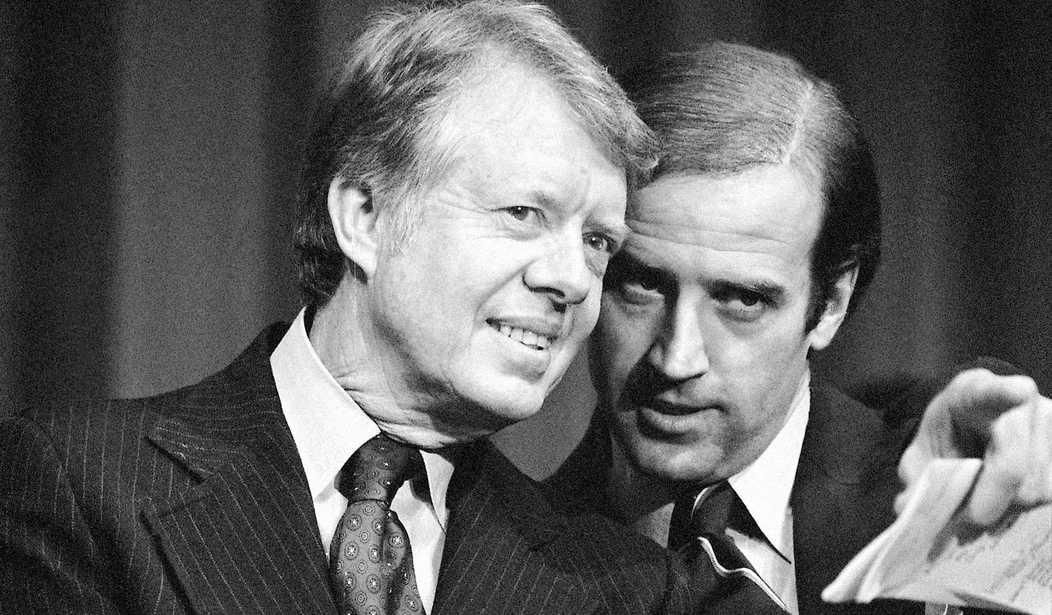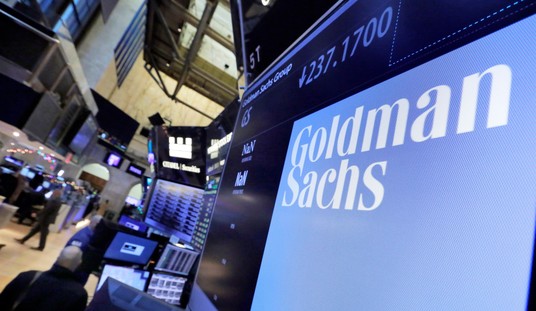Democrat incumbents have hoped that Joe Biden or the Federal Reserve would get inflation under control before the midterms. It might not come down to target levels until the presidential primaries, according to a CBO projection released yesterday. Continuing supply-chain crises will impact demand, but so will gas prices, as the CBO acknowledged and the Washington Post covers sparingly:
High inflation is expected to persist for the rest of the year, saddling Americans with higher costs as price hikes continue, the Congressional Budget Office said on Wednesday.
The nonpartisan budget office estimated that key measures of inflation will show signs of easing this year relative to last year, but will remain uncomfortably high as demand continues to outstrip supply, putting upward pressure on prices.
From the end of 2020 to the end of 2021, the consumer price index — one measure of inflation — grew by roughly 6.7 percent, the highest level in roughly four decades. The pace of that increase will come down, according to the CBO, but only to 4.7 percent — still far higher than policymakers want. Other measures of inflation cited by the budget office project that price hikes will remain roughly twice the Federal Reserve’s intended target of 2 percent. Price increases won’t fall back to targeted levels until 2024, the CBO said.
One strategy that could change those projections would be to increase domestic oil and natural gas production and then to expand refining capacity. The CBO noted in its briefing that oil and food prices were behind much of the inflationary wave, but blamed the war in Ukraine:
In a news briefing, CBO officials said the economic projections were solidified by March 2 and incorporated some of the initial impact of the disruption caused by Russia’s war in Ukraine. But officials acknowledged that the report does not reflect the likely full impact of the war on prices, as the invasion in particular appeared to put dramatic upward pressure on food and gas costs, and said inflation is likely higher than their report states. The CBO officials spoke on the condition of anonymity under the ground rules of the call.
There’s a big problem with that explanation, which is that both inflation and gas prices began sharply rising almost a full year before the invasion. Here is the average gas price on a weekly basis according to the EIA, where the current price spike begins almost exactly when Joe Biden took office:

And here’s inflation from March 2020 to March 2022, the last month of which was the only part impacted by the invasion of Ukraine:

Has the war made it worse? Sure, but not by that much. This inflationary wave and the rapid escalation of gas prices began a long time before the invasion, and if the war was to end tomorrow, would still be out of control.
The Fed apparently realizes that too. In their meeting this month, the board discussed the need to go much further in intervening against inflation than the market predicts:
Federal Reserve officials earlier this month stressed the need to raise interest rates quickly and possibly more than markets anticipate to tackle a burgeoning inflation problem, minutes from their meeting released Wednesday showed.
Not only did policymakers see the need to increase benchmark borrowing rates by 50 points, but they also said similar hikes likely would be necessary at the next several meetings
They further noted that policy may have to move past a “neutral” stance in which it is neither supportive nor restrictive of growth, an important consideration for central bankers that could echo through the economy.
“Most participants judged that 50 basis point increases in the target range would likely be appropriate at the next couple of meetings,” the minutes said. In addition, Federal Open Market Committee members indicated that “a restrictive stance of policy may well become appropriate depending on the evolving economic outlook and the risks to the outlook.”
Why would the Fed need to escalate its interventions if this were only a temporary supply-chain issue brought on by a war in Ukraine? The easy answer is that this situation is clearly broader than the narrative spun at the White House. It’s almost a mirror image of the Fed’s predicament in 2009, when Biden and Barack Obama responded to a deep recession with growth-stunting economic policies. Ben Bernanke used monetary expansions to make up for those bad economic policies, which rang up an inflationary bill that finally got triggered by Biden’s insistence on a final expansion with tons of unnecessary stimulus.
Now they’re dealing with the need to contract the money supply while Biden’s energy policies are creating far more inflation than necessary. That means that their corrections will have to be even harsher and will make a recession almost a certainty, either by the end of this year or early next year.
That means a lot of economic pain for the rest of us, either from inflation, stagflation, or an extended recession. It’s the worst of the 1970s and the Obama administration combined.
Addendum: The BEA revised its Q1 GDP assessment to the downside today, too:
Real gross domestic product (GDP) decreased at an annual rate of 1.5 percent in the first quarter of 2022 (table 1), according to the “second” estimate released by the Bureau of Economic Analysis. In the fourth quarter, real GDP increased 6.9 percent.
The GDP estimate released today is based on more complete source data than were available for the “advance” estimate issued last month. In the advance estimate, the decrease in real GDP was 1.4 percent. The update primarily reflects downward revisions to private inventory investment and residential investment that were partly offset by an upward revision to consumer spending (refer to “Updates to GDP”).








Join the conversation as a VIP Member